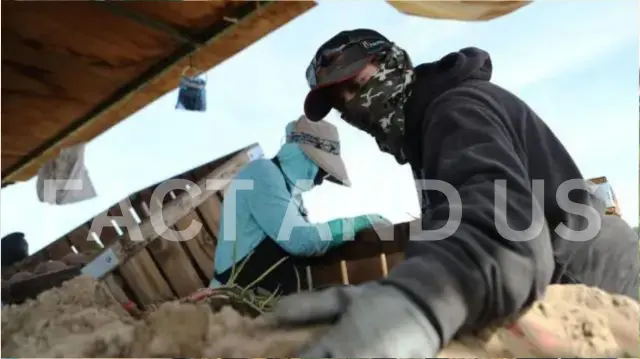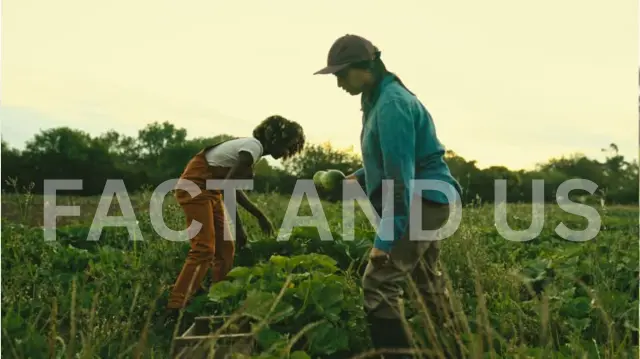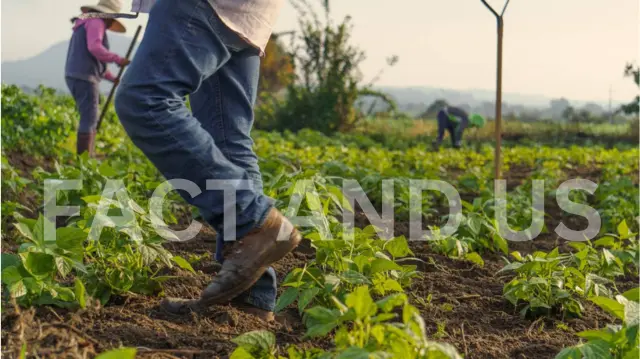Last year, Hugo watched a friend die in a vast field of sweet potatoes, his lifeless body slumped against a truck tire—one of the few shaded spots on the sweltering North Carolina farm.

“They forced him to work,” Hugo recalled. “He kept telling them he was feeling bad, that he was dying.” An hour later, he passed out.
Migrant Farm Worker Deaths
Hugo, whose real name is not being used out of fear of retaliation, has spent most of his time in the U.S. as a migrant farm worker, a job where the pay generally hovers at or below minimum wage and where working conditions can be deadly. The BBC agreed to use a pseudonym because Hugo was concerned about potential repercussions for speaking out about the incident.
His friend who died on the sweet potato farm was Jose Arturo Gonzalez Mendoza. Hugo left Mexico in 2019 with a visa to work in the U.S., leaving behind a wife and two children to pursue the “American Dream,” uncertain of when—or if—he would return. It was Mendoza’s first trip to the U.S. for work. He died within his first few weeks on the farm in September 2023. Mendoza, 29, had also left his wife and children in Mexico.


“We come here out of need. That’s what makes us come to work. And you leave behind what you most wished for, a family,” Hugo says.
From farmers and meatpackers to line cooks and construction workers, migrants often do dangerous jobs where workplace deaths typically go unnoticed by the wider public. But in the past year, the issue has been thrust into the spotlight by multiple high-profile deaths and by a migrant crisis at the border that has amplified anti-immigrant rhetoric.
The day Mendoza died, the heat was intense. Temperatures hovered around 90°F (32°C). There was not enough drinking water for workers, and the farm only allowed one five-minute break during hours-long shifts. The one place to escape the heat was a bus without air conditioning parked in an open field. These details are outlined in a report by the North Carolina Department of Labor, which fined the farm—Barnes Farming Corporation—this year for its “hazardous” conditions.

The report confirmed the death on the farm and noted that management “never” called healthcare services or provided first-aid treatment. In the hours before his death, Mendoza “became confused, demonstrated difficulty walking, talking, and breathing, and lost consciousness,” the report said. Another farm worker eventually called emergency services, but Mendoza went into cardiac arrest and died before they arrived.
The farm’s legal representation said in a statement to the BBC that it takes the health and safety of its workers “very seriously” and is contesting the labor department’s findings. “Many of the team members have been returning to Barnes for years and returned again for this growing season because of the farm’s commitment to health and safety,” they said.
But Hugo did not return. He now works for a welding company. “Bad things happen to a lot of us,” Hugo says. “I know it could happen to me, too.”

The agricultural industry has the highest rate of workplace deaths, followed by transportation and construction, according to the U.S. Bureau of Labor Statistics.
Advocacy groups and labor rights organizations have condemned the systemic issues contributing to these deaths. They argue that the agricultural industry’s reliance on vulnerable migrant laborers, combined with lax enforcement of safety regulations, creates an environment where exploitation and neglect are commonplace. “The tragic deaths of these workers are a direct result of a system that prioritizes profit over people,” said Elena Garcia, an advocate with the Farmworker Justice organization. “These are lives being sacrificed for the convenience of an industry that refuses to adequately care for its workforce.”
The American Dream, often associated with prosperity and upward mobility, appears to have a different face for those who work behind the scenes. The disparity between the idealized image of success and the harsh realities faced by migrant workers is becoming increasingly apparent. As the nation grapples with this issue, there is growing pressure on lawmakers and industry leaders to address the glaring gaps in worker protection.
Efforts to reform agricultural labor conditions have gained momentum, with several states introducing new regulations aimed at improving worker safety. These measures include stricter heat safety protocols, better access to medical care, and enhanced housing standards. However, activists argue that these changes are insufficient and that comprehensive, nationwide reforms are necessary to ensure the health and safety of all farm workers.

The recent deaths serve as a powerful reminder of the cost of the ‘American Dream’ for those who, despite their crucial contributions, remain at the margins of society. As the debate continues, it is clear that the path toward justice and equality for migrant farm workers will require not just legislative action, but a fundamental shift in how their value and dignity are perceived and respected.
In the meantime, the families of the deceased workers mourn their loss while the nation reflects on the true cost of its agricultural bounty. The hope is that these tragedies will lead to lasting change, ensuring that the promise of the American Dream extends to all who help make it a reality.
Stay connected with fact and us for more such news.
